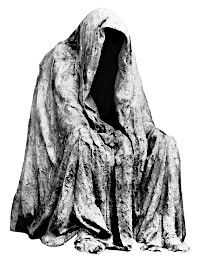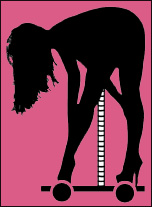You don't stop a tuff, conditioned man with a stick stab, but it remains useful. Particularly, stabbing with the bat is very underrated, as the bats is difficult to grab on the business end. And, realistically, when we train with rattan rods, we are practicing to use more specific tools and weapons which might be at hand in a survival situation.
Four recommended stabbing methods are as follows:
1. Stopper
Delivered at close range, thumb up, to the body, while checking the opponent. This is ideal for use against big men, especially if they are stepping forward. It can and has stopped big fellows walking me down. Do not lead with a thumb up stab as you can get your thumb broken by a down stroke. Using the stopper from too far out is the most common mistake as it begins arcing upward before the arm extends. In sparring or competition, this stroke should not be used unless wearing bibbed fencing masks. The WEKAF helmets actually cone over the breast bone, making a channel that guides the point right into the throat.
2. The Jab
This lazy, pronated jab with the stick is used to target and harass a fighter who is just a little slower than you but hard hitting and persistent. Feint a slow stroke or hand stroke and then slam the point into his chin or throat, jarring his neck and setting him on his heels. The throat guards for all pieces of head gear are adequate to protect the throat against this stab. This should be practiced on a post or bag. Don't stab hard when training or it will damage your flexor tendons eventually.
3. Overhand Stab
This pronated stab is delivered over his guard from an outside foot position, exactly as depicted in rapier fencing manuals of old. It is better knife stab than stick stab, but works well when not over used. Set it up with a rising backhand and then drive the point down into his neck, jaw or eye. Stroke out with a slash of some kind while moving through or off to prevent the stick from being grabbed. This is a nasty KO blow with a bat.
4. The Skewer
This is a supinated [palm up] inline stab, with the butt of the stick braced against your hip against a charging or leaping fighter. Your checking hand must be on deck and ready to deploy. As the point sinks in, push off with your rear foot to bury that sucker in his guts. This is a rare stroke of opportunity that will usually go to the body, unless you are using a bat or very thick stick, then the head might be taken at the chin. Do no go high on the head with this one as it will glance.
Over all, the stab with the stick is best used in the following manners:
-Big men use the stab to stop the lateral movement of the small, quicker man.
-Small men use it to stop the forward movement of the big man.
-Same size men will use the stab to short circuit explosive moves or combinations by setting the opponent on his heels for a split second.
-Combined with the checking hand, close range stabs, delivered one at a time and alternated with head smashes and empty hand checks, are necessary for denying the clinch of a determined foe.
Be careful practicing stick stabs to the body without a cup, as downward beats and checks will drive it into your groin.
Twerps, Goons and Meatshields: The Basics of Full Contact Stick-Fighting
link › jameslafond.blogspot.com
Being a Bad Man in a Worse World
Fighting Smart: Boxing, Agonistics & Survival











John Styer's WWII-inspired syllabus included a style (p. 112) where the hands are at opposite ends of the stick, wielded with arms parallel, guillotine style. The short end used as a poker is also featured.
ia800201.us.archive.org/21/items/Cold_Steel_John_Styers/Cold_Steel_John_Styers.pdf